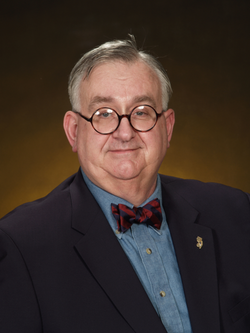I have some serious concerns this month my friends. As Howard Cohen and I work each day to report on the struck-by situations around North America, and sometimes the world, I see some serious problems. More than that my friends, I see the same operational glitches over and over again. Another seeming problem stems, I believe, from the fact that it is our friends in the world of law enforcement who are suffering the overwhelming number of casualties out the there on the highways.
Other problems which surface from time to time bother me quite a bit. One of these conundrums involves the number of incidents you and I have read about or seen where fire personnel have been arrested by law enforcement personnel for fail to obey the demands of the police.
Like you I have found myself feeling for the firefighter in these situations. I guess after 41 years in the business that is a natural way for me to react. However upon deeper reflection I see another problem at work in these situations. I see these difficulties as arising from the lack of a common game plan for traffic control operations.
If there is no agreed upon, specified way to operate, each agency will puff up its chest, step forward, and act according to THEIR procedures. This is where the problems seem to come in. If a given area has a situation where the police, fire, and EMS units tolerate, rather than support each other, you will have problems.
This is something which I promise to you. Heck, I experienced with repeated frequency during my years in the City of Newark when my troops and I operated on the New Jersey Turnpike, Garden State Parkway, and Interstates 78 and 280. The police automatically presumed they were in control. They also assumed that we in the fire department were more concerned with blocking their roads than anything else.
I cannot speak with any authority about what is in place now. Since I have been retired more than eight years now, I really cannot speak with authority about the way in which operations are now conducted. However, given the personalities of the players, I can only wonder if anything has changed.
A recent court case in Missouri has brought this issue to the fore once again. According to an article in the St. Louis Post Dispatch, Federal court jurors awarded $17,500 on Wednesday to a fire captain who was arrested by a Hazelwood police officer in a dispute over where a fire truck was parked during a 2003 car crash rescue.
Quite simply the police officer and the fire officer had differing views of the manner in which the operation should have been conducted. A number of individuals who were interviewed weighed in on the matter. The fire officer testified that he was concerned for the safety of his personnel. The police officer testified that he felt that the fire truck was creating a hazard and did not add to the safety of the firefighters.
Here is a case which screams out for mediation and coordination between the parties to the equation. In each of the cases I have reviewed over the past few years, the individuals involved in the altercations were most decidedly not on the same sheet of music.
Please note that I am blaming no one here for anything more than failing to communicate with their fellow travelers in the fire and emergency service world. I would urge each of you to work towards a meeting of the minds on how best to operate on the highways and byways of your response district.
We here at Respondersafety.com and the Emergency Response Safety Institute (ERSI) urge you to download our training materials that deal with this issue. We also urge you to build bridges to your fellow emergency workers. We are pleased to offer to you at no charge a kit to help you establish a Traffic Management Committee in your own community.
The kit includes an excellent DVD the Hats of Highway Safety a great kick off for your first meeting. We also believe that you need to bring in the towers and the news media in your effort to create an operational plan that not only works in practice but is understood by the people who will be traveling in your community.
The key here to creating a safer, more cooperative environment is to talk to each other. This is yet another case where I urge you to light the candle of cooperation rather than curse the darkness of individualism. Please consider the safety of your personnel as your primary motivation as you develop your highway safety operation procedures. When we are fighting with each other who is looking out for our responders?


